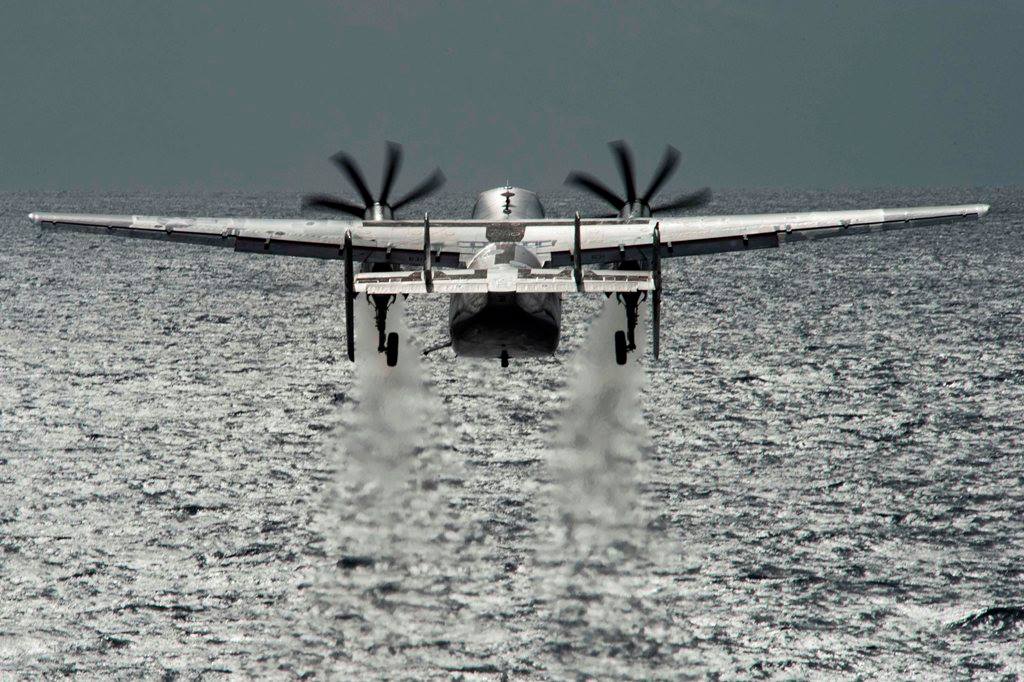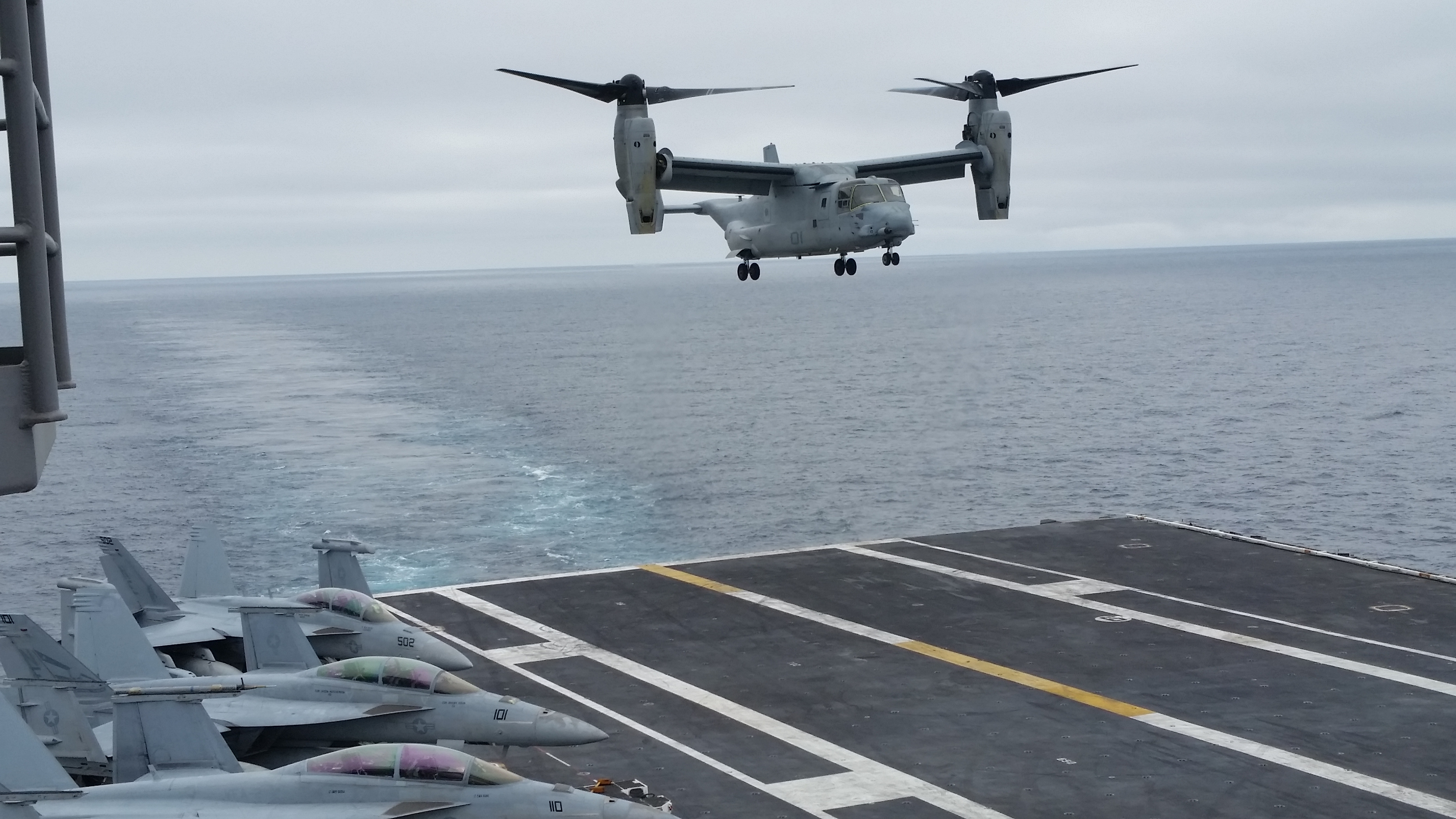
The Navy will begin taking steps to replace 27 C-2A Greyhound aircraft with 38 CMV-22B Osprey aircraft this year and is considering whether to locate the Fleet Replacement Squadron that will train all Navy Osprey pilots in Virginia or California, according to a draft environmental assessment released by the Navy on Wednesday.
The Navy currently operates the C-2A as a carrier onboard delivery (COD) aircraft for its fleet of nuclear aircraft carriers on both the East and West coasts, with detachments operating overseas as well to provide delivery support to aircraft carriers – bringing personnel, visitors, mail, spare parts and more from the shore to underway carriers. The Navy announced in January 2015 it would replace the aging C-2As with a new variant of the V-22 Osprey, which would be modeled after the Marine Corps version but would include a larger fuel tank for greater range, additional communications gear and a public address system in the rear section of the plane for passengers.
The draft environmental assessment (EA), released by U.S. Fleet Forces Command, includes many previously unannounced details of the transition from the C-2A to V-22.
The Navy will conduct V-22 operations out of Naval Station Norfolk, Va. and Naval Air Station North Island, Calif., same as it currently operates the C-2A. The service is still deciding where to locate the Fleet Replacement Squadron. The Navy previously operated a C-2A FRS on each coast but in 1994 consolidated, with Carrier Airborne Early Warning Squadron (VAW) 120 in Norfolk serving as the sole C-2A training location since then.
The Navy will replace its 27 C-2As with 38 V-22s – an increase required “because the current inventory of C-2A aircraft is not sufficient to meet the mission requirements,” the draft EA reads. The transition to the new aircraft will begin in 2020 and should end by 2026, according to the assessment, with the full fielding of the new V-22s coming in 2028. How that transition plays out in Norfolk and in San Diego will depend on which location is chosen to host the FRS.

Under the first alternative, locating the training school at Halsey Field at NAS North Island in San Diego, the transition would wrap up in 2028. NAS North Island would go from 10 aircraft serving as CODs to 23, and 341 new personnel would come in to support the V-22 operations and training. In Norfolk, under this scenario, total aircraft would decrease from 17 to 15 and the workforce would drop by 126 personnel, due to the loss of the training squadron.
Under the second alternative, locating the FRS at Chambers Field at Naval Station Norfolk, the last C-2A would leave North Island as early as 2024 and Norfolk by 2026, though the full transition and introduction of new V-22s would not be completed until 2028 still. With the FRS in Norfolk, total aircraft there would increase from 17 to 20, and total aircraft at North Island would increase from 10 to 18. Personnel at Norfolk would increase by 54, and North Island would see a 161-person increase.
Regardless of where the Navy locates the FRS, North Island is set for a big increase in COD operations, reflecting the Navy’s emphasis on West Coast deployments to the Pacific and the move to homeport six carriers on the West Coast or forward-deployed in the Pacific compared to just four on the East Coast. Norfolk will see more operational COD aircraft and personnel in either scenario but could see a decrease in total aircraft and personnel levels if the FRS was moved from Virginia to California.
Under either scenario, the Navy-variant V-22’s initial operational capability is scheduled for September 2020, so facilities and support will have to be set up in at least one location by October of that year. Full operational capability for the CMV-22B is set for 2024. Facilities upgrades are set to begin this year, according to the assessment.
In support of reaching IOC and FOC ahead of the training squadron being established, Navy V-22 pilots and aircrew will train at the Marine Corps’ MV-22 training squadron, VMMT-204 at Marine Corps Air Station New River in North Carolina. Navy V-22 maintainers will also attend school at MCAS New River.





